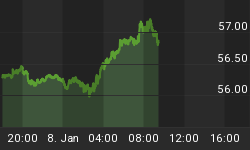Do not get distracted by the end-of-year rally. In January, markets might fall again. Here is why.
E.U. banks are short of credibility.
On December 21, the E.C.B. introduced a three-year term loan for 523 banks. The amount involved will be euro 489 billion at 1% rate, around euro 240 billion net. The Long Term Refinancing Operation (LTRO), anticipated on December 8 by President Mario Draghi, has the objective of supporting bank lending to small/medium term organizations and helping financial institutions refinance at medium-term maturities.
Will it work? Liquidity is desperately sought and will be challenging to expand lending in the midst of a recession. It would be more probable for banks to use the LTRO for refinancing books at low cost and improve the cash flow. At the contrary, government bond purchase should be limited. After the announcement, the Italian bond yields were again above 7% last week.
In reality, Europe is preparing for the worst. In an interview to the Financial Times, President Draghi warned about the consequences of the euro zone breaking apart. He expects each nation to follow up with the austerity measures and to finally make the European Financial Stability Facility (EFSF) operational. How the markets will react? Trust stays low. Money will not be enough in case of Italy defaulting. The eur/usd should decline to 1.28, 1.24 and eventually 1.20. Historically, the first part of the year is favourable to the U.S. dollar.
U.S.: One tiny step after the other.
After intense negotiations, the U.S. congress has passed the law to extend the payroll tax cut until February 2012. Despite this year small gains, the road stays tortuous. Hiring has to accelerate for keeping momentum up. The three months moving average rose from 67,000 in July to 143,000 in November. Weekly initial claims fell instead to 364,000 during the week ending December 17, the lowest level since 2008. Nevertheless, monthly gains are too thin. The U.S. population is growing 140,000-150,000 units a month. So, more jobs will be needed in the future to fit the discouraged people re-entering into the work force.
Further household deleveraging and an unclear fiscal policy should weight on growth next year as well. Government jobs might still be under pressure. Investment gains could shrink. A decline of the S&P 500 index to 1050/950 is still in the cards, unless prices rise above 1360. However, demand for homes could improve, since housing prices appear to be designing a bottom at current levels. At current monthly rates, the inventory of homes for sale has declined to seven months compared to the ten months registered in July 2010. Nonfinancial companies have a good amount of cash to invest in non-residential projects. In the past, housing prices rose to new highs within 3/5 years after reaching the bottom.
















